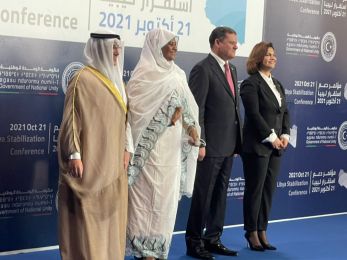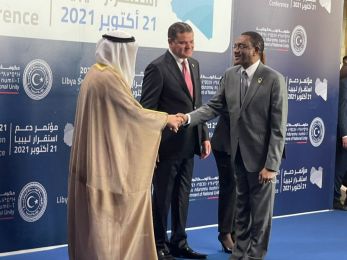Zim govt spent RTGS$178,02 million on social protection programs in Q1
Harare, Zimbabwe (PANA) - The Zimbabwe Treasury spent only RTGS$178,02 million (US$35,05 million) on social protection programs in the first four months of the year, sources told PANA here.
The expenditure covers a RTGS$16.09 million (US$3.16 million) support fund, health social support of RTGS$84.74 million (US$16.68 million) and RTGS$6.19 million (US$1,21 million) for education.
It also includes RTGS$8 million (US$1.57 million) for the Basic Education Assisted Module (Beam), and RTGS$63 million (US$12.4 million) for public sector wages.
This comes as the United Nations reported in March that a staggering 4.4 million Zimbabweans are facing hunger due to economic hardships that continue to take a toll on the country’s population.
The need for social protection programs comes as Treasury implemented a host of austerity measures since October 2018.
These include a 2 percent money transfer tax, an increase in fuel taxes and levies and introducing a largely unbacked local currency that has eroded wages.
Finance Minister Mthuli Ncube revealed this Monday when he appeared before the Parliament Budget, Finance and Economic Development Committee to answer questions from legislators on the economy.
“For our social protection budget, we have spent RTGS$16.05 million (between January and April), and that is excluding the impact of the Cyclone Idai in terms of the food procurement we will have to engage in.
“If we expand that to include the entire social sector within our budget, so that includes health and education, of course there will be some double counting if you look at the Beam (Basic education assisted module) budget,” Ncube said.
Beam is a RTGS$8 million social protection program that covers cash transfers, food deficit support, support to the disabled and elderly, children in difficult circumstances, health, and sustainable livelihoods for more vulnerable groups.
“If you look at the health budget so far, we spent RTGS$84.74 million, and in the education sector focusing on the social protection part that is your primary and secondary education, we have 6.19 million as a ministry so this is really the nature of the social protection programme. It is multifaceted, it is a package where government is a major player but so are development partners,” Ncube said.
He said to cushion public workers, they increased wages with RTGS$63 million in the first quarter of the year and plan to increase it by a further RTGS$450 million (US$88,58 million) going forward.
Ncube said Treasury was able to do this through registering budget surpluses on a month on month basis.
But, economists say any increments in wages is still far behind the annual inflation rate currently at 77.8 percent as at the end of April.
Propelling inflation is wanton price increases according to the parallel forex market were most businesses are sourcing their foreign currency to import raw materials at favourable rates, compared with the official interbank forex market.
Ncube said in terms of wages for the private sector, companies could do anything they saw fit to remain profitable.
“This government has a sterling record in basically institution measures in social protection in the rural areas but for the first time year, maybe 37 years for that matter, we are going to begin social protection programs in the urban areas and we have begun in terms of food distribution in Harare, Bulawayo and the program is going to expand and also some targeted cash transfers,” Ncube said.
Treasury also introduced subsidized transport services to offer social protection; however, the system is reportedly unreliable.
Legislators were not convinced with Ncube’s answers as this did not address how people’s salaries were being eroded due to the continued devaluation of the local currency, RTGS dollar.
To date, the RTGS dollar since February has devalued by more than 100 percent from US$1: RTGS$2.50 to US$1:RTGS$5.08, according to official rates.
Further, legislators reported that shops were now refusing to accept the RTGS dollar preferring the US dollar instead.
Finance Ministry's permanent secretary George Guvamatanga said government intended to inject US$1.7 billion into the interbank forex market to help support the RTGS dollar.
"For the period 2018, the total export shipments were US$4.3 billion, those were our exports by 2018. By the end of December 2018, we had received US$3.8 billion as receipts which means that there was US$500 million of export proceeds that was still supposed to come into the economy and exporters are given 90 days after shipment to bring the export proceeds," he said.
"So, one would expect that between the period of December 2018 up to the end of March, at least US$500 million would have come into the market from shipments done in 2018. For the period January to May 2019, the total shipment of exports was US$1.4 billion which means that again within a 90-day period, we should have expected to receive this money. But what we have received is US$1 billion, meaning there is an outstanding amount of US$400 million."
As such, he said the US$500 million, US$400 million plus the current US$800 million currently sitting in nostro bank accounts would give US$1.7 billion that would be injected into the interbank market and try to support the RTGS dollar by providing foreign currency.
But American financial services firm Fitch Solutions says pressure from workers demanding higher pay, the country running trade deficits and Zimbabwe's exclusion from international capital markets would hurt government efforts.
Also, British publication - The Economist - reports that low confidence in government would also keep foreign currency holders from parting with their cash.
-0- PANA TZ/RA 27May2019






